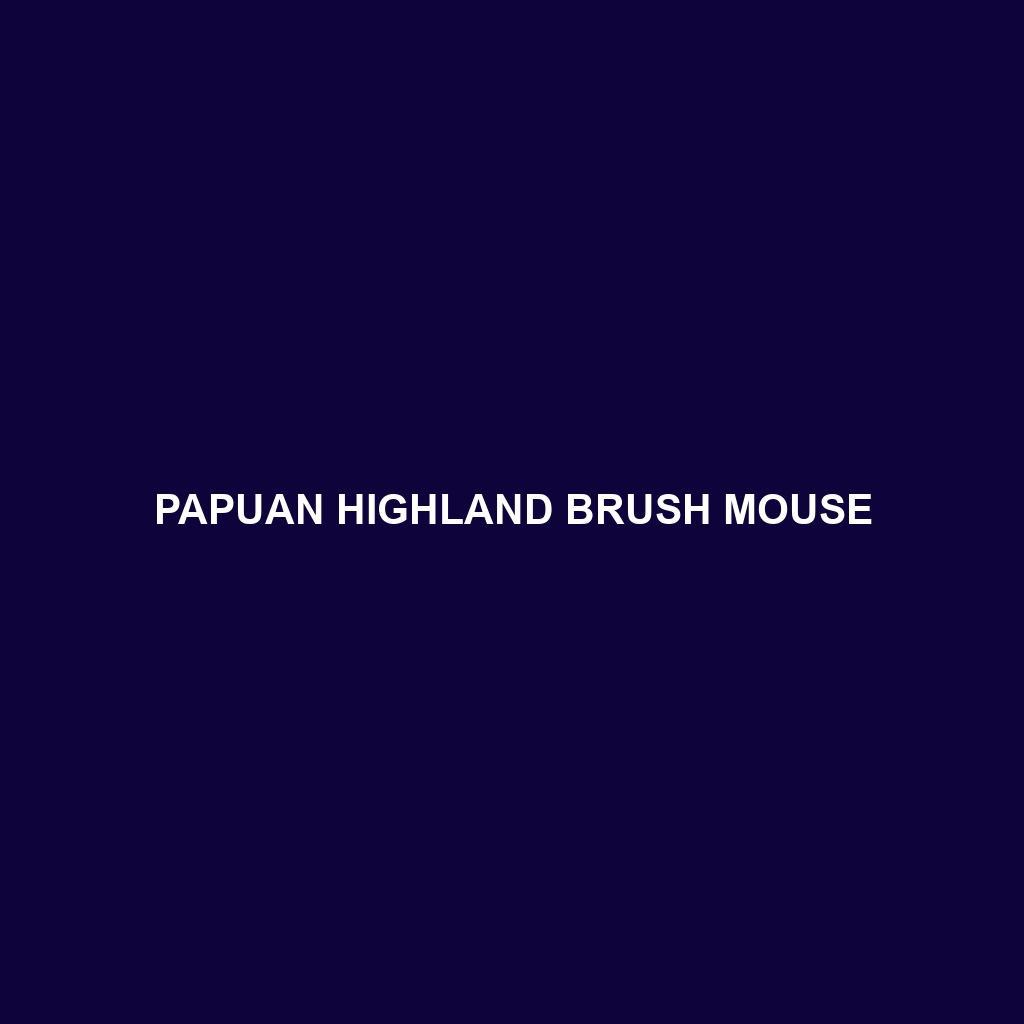Species Description: Papuan Highland Brush Mouse
Common Name: Papuan Highland Brush Mouse
Scientific Name: Microhydromys spp.
Habitat
The Papuan Highland Brush Mouse is primarily found in the mountainous regions of Papua New Guinea and Indonesia. This species thrives in high-altitude forests, particularly in mossy and cloud forests that provide a cool, humid environment. The brush mouse is adapted to live in elevations ranging from 1,500 to over 2,500 meters above sea level, showcasing a preference for dense vegetation and underbrush where it can find shelter and forage for food.
Physical Characteristics
The Papuan Highland Brush Mouse is a small rodent, typically measuring 10 to 15 centimeters in length, excluding its long, bushy tail which can add an additional 10 to 15 centimeters. Its fur is generally dark brown or grayish with lighter underparts, providing excellent camouflage in its forest habitat. Distinctive features include large, rounded ears and sharp, small claws adapted for climbing and navigating through tree branches and undergrowth.
Behavior
This species is predominantly nocturnal, exhibiting active behaviors during the night when it forages for food. The Papuan Highland Brush Mouse is agile and capable of climbing, often seen scampering up trees or dense vegetation. Socially, they are mostly solitary, marking their territories with scent to avoid conflicts with others. Communication occurs through vocalizations and scent markings, particularly during mating seasons.
Diet
The diet of the Papuan Highland Brush Mouse mostly consists of fruits, seeds, and insects found within its forest habitat. Known to forage on the forest floor as well as in the understory, this rodent plays a vital role in seed dispersal, contributing to the health of its ecosystem. Its feeding habits also encompass a range of organic matter, ensuring it has a varied diet that can adapt to seasonal changes.
Reproduction
The breeding habits of the Papuan Highland Brush Mouse involve a reproductive season that typically aligns with specific environmental conditions, particularly with food availability. Gestation lasts approximately three weeks, after which females give birth to a litter of 2 to 5 offspring. The young are born hairless and helpless, gradually developing the ability to thrive independently as they mature, typically after 4 to 5 weeks.
Conservation Status
The Papuan Highland Brush Mouse is currently classified as vulnerable due to habitat loss and fragmentation resulting from logging, agricultural expansion, and climate change. These threats pose significant risks to their population numbers, warranting conservation efforts to protect their natural habitats and ensure the survival of this unique species.
Interesting Facts
One interesting fact about the Papuan Highland Brush Mouse is its ability to adapt to varying altitudes within its range, showcasing resilience against environmental changes. Moreover, their unique reproductive strategy allows them to repopulate areas quickly when conditions are favorable, making them an intriguing subject for researchers interested in evolutionary adaptations.
Role in Ecosystem
The Papuan Highland Brush Mouse plays a crucial role in its ecosystem as a seed disperser. They help promote biodiversity by facilitating the growth of various plant species through their feeding habits. Additionally, as prey for birds of prey and other carnivorous species, they contribute to the food web, making them an integral part of the highland forest ecosystem.
